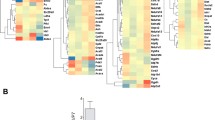Summary.
Depleting intracellular taurine in heart cells improves their resistance to ischemia and reperfusion injury. The aim of this work was to see whether physiologically low levels of endogenous taurine also reflect a reduced vulnerability of the myocardium to cardiac insults. The myocardial concentration of taurine was measured during different stages of development and compared with vulnerability to ischemia and reperfusion injury in the rat and in pediatric patients undergoing cardiac surgery.
Rat hearts with relatively lower levels of taurine were significantly more resistant to an ischemic inult and there was a strong negative correlation between taurine content and recovery. Children’s hearts had significantly lower taurine levels compared to infants’ hearts which was consistent with their known increased resistance to an ischemic cardioplegic insult (Imura et al., 2001). This work shows that the changes in the concentration of myocardial taurine during development correlate with vulnerability to ischemia where low myocardial taurine is associated with improved recovery upon reperfusion.
Similar content being viewed by others
Author information
Authors and Affiliations
Rights and permissions
About this article
Cite this article
Modi, P., Suleiman, MS. Myocardial taurine, development and vulnerability to ischemia. Amino Acids 26, 65–70 (2004). https://doi.org/10.1007/s00726-003-0031-y
Received:
Accepted:
Published:
Issue Date:
DOI: https://doi.org/10.1007/s00726-003-0031-y




